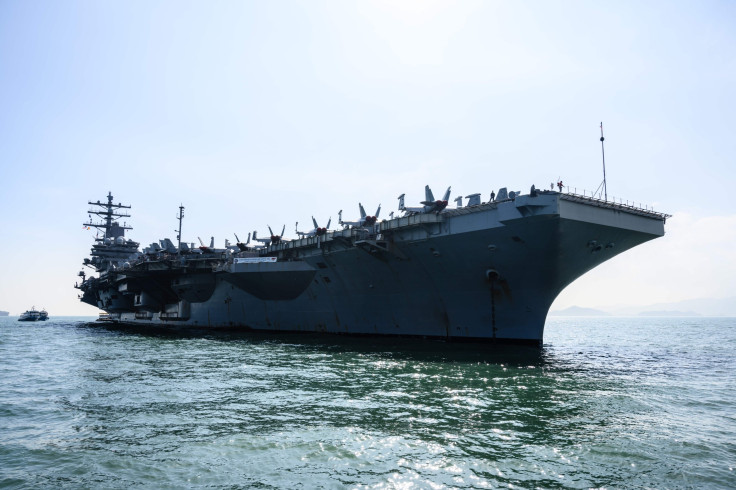China Military News: 4 New Nuclear-Powered Aircraft Carriers By 2035

China plans to build four new nuclear-powered aircraft carriers in order to catch up with the United States Navy by 2035. It currently has two carriers, and aims to add at least four more to the fleet, reports said Wednesday.
The new carriers will be equipped with electromagnetic catapults that make it easier to launch the aircraft faster than the diesel systems. Though the naval hardware might be at par with that of the U.S., they will still lack the experience of real combat.
“China’s nuclear-powered aircraft carriers with electromagnetic aircraft launch system (EMALS) are expected to join the Navy by 2035, bringing the total number of carriers to at least six-although only four will work the front line,” Wang Yunfei, a naval expert and retired People’s Liberation Army (PLA) destroyer naval officer told the South China Morning Post. He also said China needs to keep developing until it is at the same level as the U.S.
Wang also said the financial slump in China will not affect the budget of the carriers and even if it did, they would adjust the proportions in the total military expenditure and ensure that the naval modernization wouldn’t stop.
He said, “The budget for military modernization will not be cut even if (the mainland) decided to (use force to) reunify Taiwan. In a war scenario, (Beijing) may reduce spending on things like infrastructure, but it would increase military expenditure.”
Chinese President Xi Jinping ordered the PLA to be modernized by 2035 and become the top ranking fighting force by 2050. He also wanted a modern PLA force — the largest standing army in the world, to reduce troops in the army and spend more on the air force and navy.
Construction of China’s next conventional diesel-powered aircraft carrier, the Type 002, began in 2018. The carrier is the first one equipped with electromagnetic launchers. Song Zhongping, a television military commentator from Hong Kong, said, “The Type 002 — a conventionally powered carrier with an EMALS like system — may become the only one of that kind of aircraft carrier, because China will next build multiple nuclear-powered aircraft battle platforms.”
Currently, China has one aircraft carrier, the Liaoning, in service, which was commissioned in 2012 while the Type 001A is still being tested. The Liaoning was refitted from a half-constructed Soviet hull bought from Ukraine in 1998 and is used to train carrier crews.
The PLA Navy was also planning to develop its own fighter jets to be used on the aircraft carriers since currently it just has one type of carrier-based fighter jet — the J-1 — while the U.S. has two.
Both Wang and Song believe that though China’s overall strength would remain limited by the lack of combat experience, the aircraft carrier technology and carrier-based fighter jets would be equivalent to the ones in the U.S.
China claimed the urgency to modernize its navy was in order to secure its trade routes and maintain peace in international waters. It also claimed its military was devoted to peace and the new naval fleet will be used to patrol the international waters.
However, countries like Japan and the U.S. are unwilling to believe this and see it as China adopting a hostile posture. Additionally, they believe it was the territorial disputes the country faces in the South and East China Seas that compelled it to build a stronger navy.
© Copyright IBTimes 2024. All rights reserved.





















